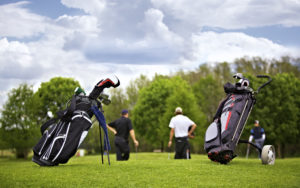 You have been considering taking up golf for a while, and today is the day you have decided to begin. However, going to the sports store to gather your gear is turning out to be more overwhelming than expected.
You have been considering taking up golf for a while, and today is the day you have decided to begin. However, going to the sports store to gather your gear is turning out to be more overwhelming than expected.
There are a lot of options available to you, from clubs to golf balls. One common error that beginners often make is choosing the wrong golf clubs. If you select a set that does not match your skill level or body type, you are setting yourself up for failure. Best golf clubs for beginners you can find on athletesite.com, these team create a review for golf gear.
No need to stress, we are here to assist you in making the best decision. Continue reading for a comprehensive guide on buying golf clubs.
Why Your Golf Clubs Matter
When you are new to golf, the choice of clubs you purchase is important. Beginner clubs are designed to be more forgiving, allowing for some room for error in your swing and contact with the ball.
Starters clubs have bigger clubheads and shorter shafts. This setup assists in getting the ball airborne more easily, regardless of your swing. It enables you to refine your golf skills without becoming discouraged and giving up on the sport.
1. Test Them Out First
The employees at the sports equipment store will present you with a variety of clubs and praise their features. It is crucial that you try out the golf clubs yourself to form your own judgment before making a purchase.
Numerous stores offer indoor areas for trying out golf clubs, and it is advisable to be cautious when purchasing clubs from a friend, as their word may not always be reliable.
Not all clubs are suitable for every golfer. Just because a set of clubs worked for someone else doesn’t mean it will work for you. Be sure to test them out before making a decision to buy them.
2. Don’t Buy the Entire Bundle
Several sporting goods retailers may attempt to persuade you to purchase an entire set of golf clubs all at once. However, when you are just getting started, you do not necessarily need a full set of clubs. Instead, consider purchasing a half set specifically designed for novice golfers.
Purchasing individual golf clubs will be more affordable and less complicated to use compared to buying a complete bundle of clubs. You can gradually add more clubs to your half set as you improve your skills, or if preferred, you can eventually exchange it for a complete set.
3. Pick Up a Shorter Driver
The driver is the primary club used to start each hole, with its large head and ability to drive the ball a great distance.
Typically, the driver is the longest club in a golfer’s set, so it’s recommended to look for a shorter driver. On the PGA Tour, the average driver length is approximately 44.5 inches.
Use that as your starting point. If you buy one that is longer than that, it will be more difficult for you to manage, resulting in subpar outcomes.
4. Buying Your Putter
The putter is the club you use on the green to try to get the ball in the hole, as it has a flat face that helps you send the ball straight.
You will likely be using your putter frequently, so it is important to ensure you choose one that is suitable for you. Your selection should be based on factors such as your height, stance, and arm length.
Try out the putter at the store. If you find it difficult to keep the putter parallel to the ground while hitting the ball, it may not be the best choice for you.
Another aspect to consider is the loft of the putter. Correct loft can prevent the ball from bouncing too much and increase the chances of it going into the hole.
5. Irons Vs Hybrids
Having 3-, 4-, and 5- irons in your beginner golf set can lead to problems. These clubs do not have enough loft for a novice player to effectively practice their swing technique. It is recommended to swap out these irons for hybrids.
Hybrids are created by combining different types of woods and irons, allowing players to enjoy the advantages of both without worrying about the drawbacks of either.
They are shaped like wooden clubs but are the same length as iron clubs. This design makes them easier for beginners to handle and they are more forgiving if you don’t hit the ball directly in the center.
6. Selecting Your Wedge
The key factor in selecting the appropriate wedge is the specific characteristics of the golf course you are playing on. For instance, if the green is raised, a wedge with a high degree of loft is necessary to prevent the ball from bouncing uncontrollably.
If the course contains many bunkers filled with soft sand, your sand wedge should be wide with more bounce. On a firm turf, it is best to avoid having too much bounce.
7. Ask Your Golfing Friends for Help
If you are uncertain about which clubs to choose, seek assistance from your knowledgeable friends. See if they can give you the opportunity to test out their set so that you can have a better idea of what to look for.
Request that they accompany you to the sports store where they can assist you in locating the specific items you require.
Selecting golf clubs that are ideal for novice players
Selecting golf clubs can be challenging for beginners because of unfamiliar terminology and the wide range of options available. It can be difficult to find clubs that will help improve your skills and knowledge of the game.
